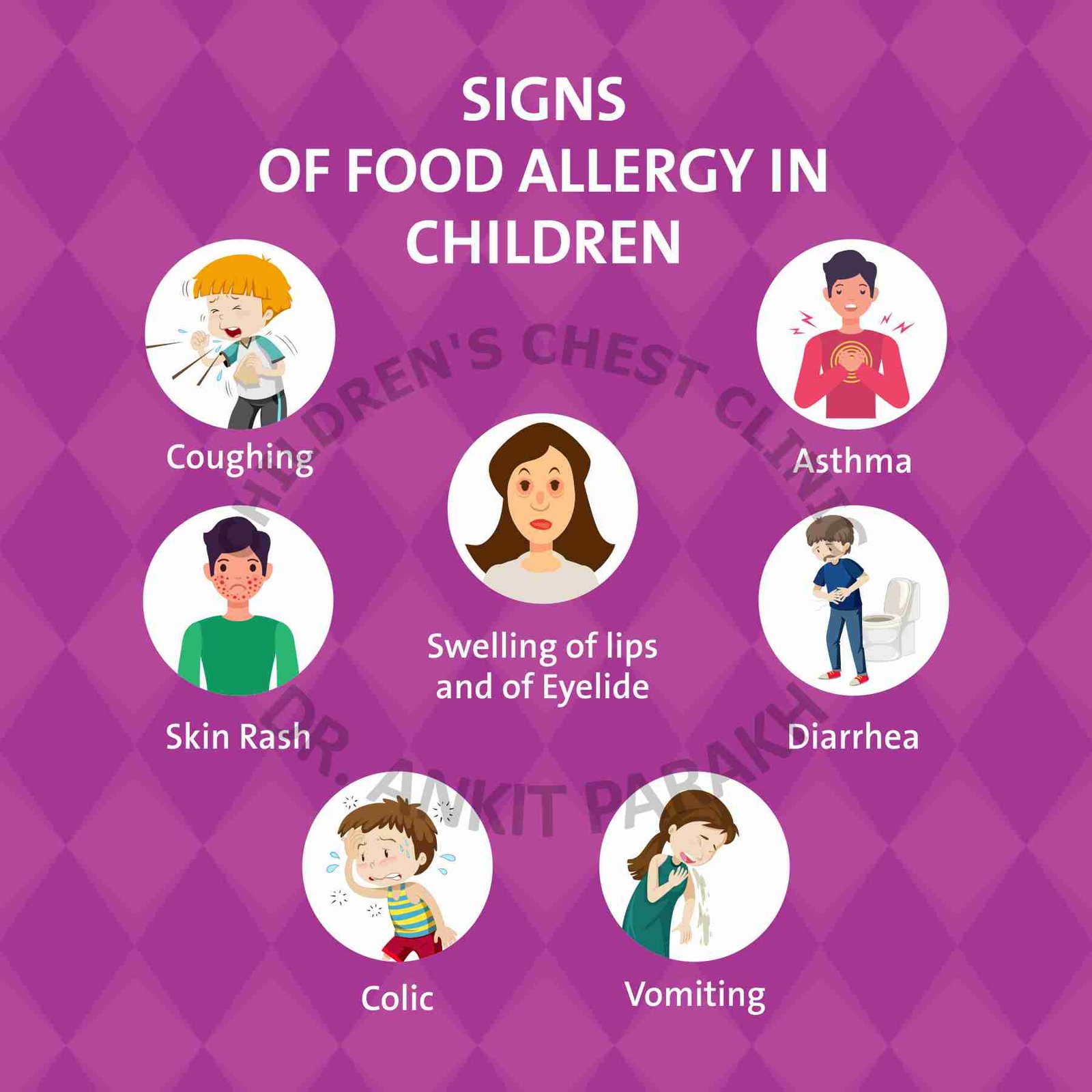
Food Allergy in Children
What is a Food Allergy?
A food allergy is an immune system response to specific proteins in foods. When a child with a food allergy consumes or comes into contact with the allergenic food, their immune system mistakenly identifies it as harmful, releasing chemicals like histamine that trigger allergic symptoms.
Symptoms of Food Allergy in Children
Food allergy symptoms can vary widely in severity and may appear within minutes to a few hours after eating the offending food. In some children the allergic reaction is mild but for few food allergy reaction can be severe and even life-threatening called as Anaphylaxis. Common symptoms include:
Skin Symptoms:
- Hives, redness, or itching.
- Swelling, particularly around the lips, face, or eyes.
Gastrointestinal Symptoms:
- Nausea, vomiting, or diarrhea
- Abdominal pain or cramps.
Respiratory Symptoms:
- Runny or stuffy nose.
- Coughing, wheezing, or shortness of breath.
Anaphylaxis:
- A severe, life-threatening reaction that includes difficulty breathing, low blood pressure, and loss of consciousness. Immediate treatment with epinephrine is required.
Common Causes of Food Allergy
While any food can cause an adverse reaction in children, more than 90 percent of food allergy reactions are caused by eight types of food. The most common foods that cause allergies in children include:
- Milk
- Eggs
- Peanuts
- Tree nuts (e.g., almonds, walnuts)
- Soy
- Wheat
- Fish
- Shellfish
Food allergies are more likely to develop in children with a family history of allergies, asthma, or eczema.
Diagnosis of Food Allergy
Diagnosing a food allergy involves a detailed medical history, physical examination, and specific tests, such as:
- Skin Prick Test: Identifies potential allergens by placing a small amount of food extract on the skin.
- Blood Tests: Measures levels of allergen-specific antibodies (IgE).
- Oral Food Challenge: Conducted under medical supervision, this test involves consuming small amounts of the suspected food to confirm the allergy.
Prevention and Management of Food Allergy
Avoidance of Allergens:
- Carefully read food labels to avoid hidden allergens.
- Teach children to recognize and avoid allergenic foods.
Emergency Action Plan:
- Keep an epinephrine pre loaded syringe (as epinephrine auto injectors are not available in India).
- Ensure caregivers, teachers, and peers know how to respond to an allergic reaction.
Breastfeeding and Early Introduction:
- Exclusive breastfeeding for the first six months may lower the risk of allergies.
- Introduce allergenic foods early, as guided by a pediatrician, to reduce the likelihood of developing allergies.
Regular Check-Ups:
- Follow up with a pediatric allergist to monitor the child’s condition and re-evaluate allergies periodically.
Food allergies in children require vigilant management, from recognizing symptoms to avoiding triggers and preparing for emergencies. With proper care and guidance, children with food allergies can lead healthy and active lives. For expert advice and personalized treatment, consult a pediatric allergist, to ensure the best care for your child.
Conclusion
Frequently Asked Questions (FAQs)
1. Can children outgrow food allergies?
Yes, many children outgrow allergies to milk, eggs, or soy by school age, though peanut and tree nut allergies are less likely to be outgrown.
2. Is there a cure for food allergies?
There is no cure, but treatments like oral immunotherapy (OIT) may help desensitize children to certain allergens.
3. How can I differentiate between a food intolerance and a food allergy?
Food allergy sometimes confused with food intolerance. While more common and bothersome, food intolerance is a less serious condition that is not mediated through our immune system. Food intolerance typically causes digestive symptoms only.
4. Are food allergies inherited?
Children with a family history of allergies, asthma, or eczema have a higher risk, but genetics alone don’t determine food allergies.
5. What should I do if my child has a severe allergic reaction?
Administer epinephrine immediately and call emergency services. Delay in treatment can lead to life-threatening complications.



